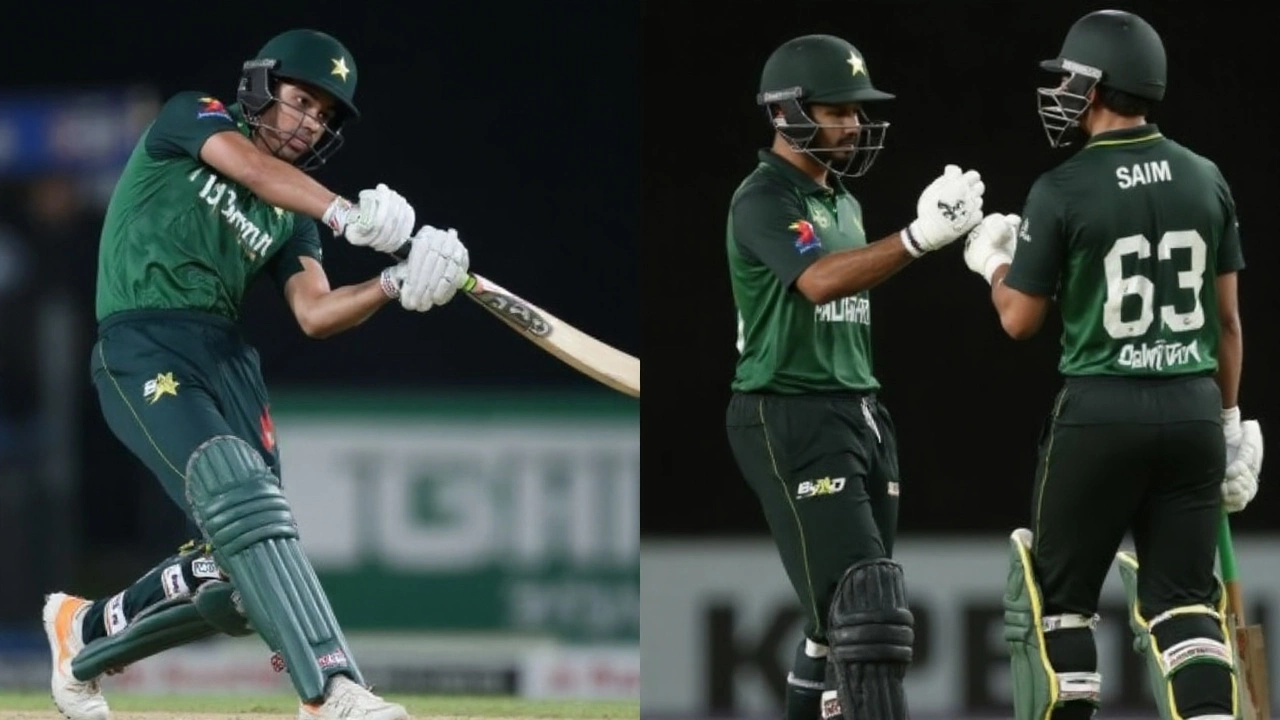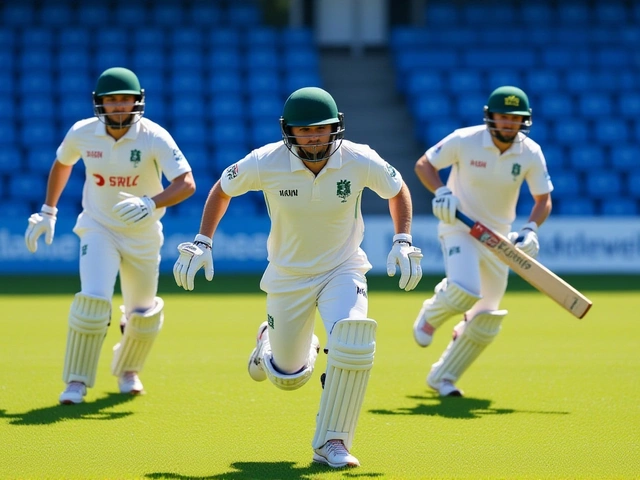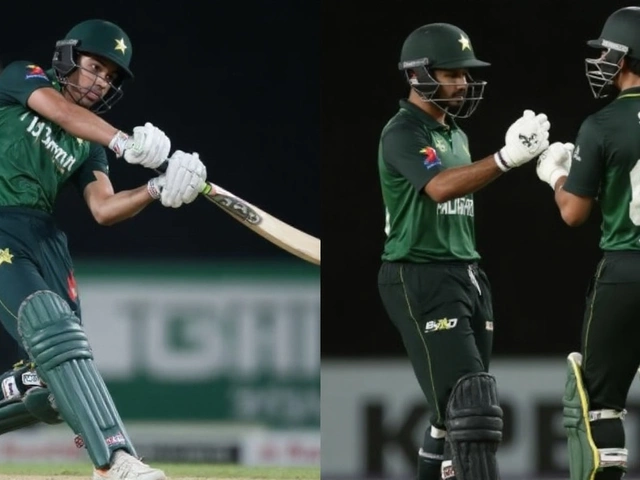New-look Pakistan for Asia Cup 2025: what changed and why it matters
Two of Pakistan’s most bankable names are missing, and that alone changes the feel of the tournament. The Pakistan Cricket Board announced a 17-member squad on August 17 for the tri-series against Afghanistan and the UAE and for the Asia Cup 2025 in September. There’s no Babar Azam. No Mohammad Rizwan. In their place comes a different idea of how this team wants to play.
Salman Ali Agha, the steady middle-order batter who also bowls off-spin, has the armband. Mohammad Haris, the high-tempo wicketkeeper-batter, takes the gloves. The selectors have kept the spine of the attack intact with Shaheen Shah Afridi and Haris Rauf, and they’ve retained Fakhar Zaman’s experience at the top. But the rest of the XI is being reimagined with younger, hungrier faces who have not yet been scarred by the weight of expectation.
The board did not spell out whether Babar and Rizwan were being rested or rotated, but the logic is easy to read: give the next line more time in the middle and see who can handle the heat when the games tighten. It’s a selection call that doubles as a stress test for Pakistan’s bench, especially for the top order and the spin options.
All formats sharpen the same truths: who wins the new ball, who controls overs 7–15, who survives and scores at the death. Pakistan’s rejig answers those questions with fresh roles. Saim Ayub and Sahibzada Farhan are being asked to do what Babar-Rizwan did for years—set a base without going into a shell. In the middle, Salman Ali Agha provides calm, Haris offers pace-of-scoring, and two left-hand all-rounders—Mohammad Nawaz and Faheem Ashraf—balance the side. With the ball, Shaheen sets the tone, Rauf hunts in the middle and at the death, and a different class of spin—mystery from Abrar Ahmed and left-arm variety from Sufyan Moqim—gives the attack more angles.
There’s context here. Saim had a quiet return from injury in Bangladesh (28 runs in three innings), then put up 130 in three T20Is against the West Indies at 43.33. That rebound is exactly what the selectors want to bottle. Farhan, a domestic heavyweight who has waited patiently, brings shape and tempo to the first six overs. Abrar is the disruptor in the middle overs. Salman Mirza offers hit-the-deck pace and energy in short spells. Moqim, a left-arm wrist spinner, is a match-up tool against right-heavy batting orders.
It’s a different Pakistan: more options, quicker scoring intentions, and a captain who likes to keep things simple. The bet is that the old core’s absence will force new leaders to emerge rather than leave a void.

Five first-time Asia Cup picks: roles, risks and upside
The headline is about fresh faces. Five players are set for their first Asia Cup, and each has a defined job. The key is whether they hit the ground running when the format switches between ODIs and T20Is.
Saim Ayub (opener): Left-handers at the top change fielding patterns and bowling plans, and Saim does that while scoring in front of square. He’s played international cricket, but the Asia Cup stage is new ground. After the injury layoff and a lean Bangladesh tour, he found rhythm against the West Indies—130 runs in three T20Is at an average above 40 tells you the base is sound. The challenge is stringing starts into match-winning contributions when the ball grips or swings. Expect him to open and take first strike, especially in T20s, with license to go hard in the powerplay.
Sahibzada Farhan (opener): A right-hander with a compact method and gears for the powerplay. Farhan’s long haul in domestic cricket has built a game that doesn’t panic at dots. He looks for gaps square on both sides and rotates well, which pairs neatly with Saim’s boundary game. In ODIs, he can bat through 20–25 overs; in T20s, he can push his strike rate without slogging. His test in this tournament will be new-ball movement and high-quality left-arm pace—something he’ll likely meet in the first two rounds.
Abrar Ahmed (spin – mystery): Built for the middle overs. Abrar’s strength is deception—wrong’uns that look like leg-breaks and pace variations with the same release. He drags batters into false shots by denying them length. In T20s, he can bowl two overs straight after the powerplay; in ODIs, he’s the 11–25 overs specialist. His role becomes critical if Pakistan choose a single specialist spinner and back Nawaz for control at the other end.
Salman Mirza (right-arm pace): A brisk, skiddy seamer who brings energy, especially at the death. He hits the pitch hard and can surprise batters with steep bounce at chest height even on placid tracks. Mirza is a change-up bowler in T20s and a third seamer backup in ODIs. If Shaheen and Rauf take the new ball, Mirza can own over 15–19 with cross-seam and cutters. His learning curve will be managing execution under pressure—one wide yorker too many and the over spirals.
Sufyan Moqim (left-arm wrist spin): This is the rare skill set. Chinaman bowlers are scarce in international cricket, and Moqim gives Pakistan a left-arm wrist option that turns the ball away from right-handers while holding a different angle to a conventional leggie. He pairs well with Abrar because both bowl at hitters with uncertainty. Match-ups against middle-order right-handers could decide his game time; in venues with larger square boundaries, his value spikes.
Two names carry the weight of replacing the old firm at the top: Saim and Farhan. Their job is not to be Babar and Rizwan. Their job is to outpace the run rate of previous powerplays without reckless loss. If they can get Pakistan to 45–50 without damage in ODIs, and 55–60 in T20s, the rest of the batting has enough muscle to cash in.
Salman Ali Agha’s promotion is the other big story. He isn’t flashy. He’s a rhythm stabilizer who keeps the scoreboard moving with nudges, picks his matchups, and turns overs quickly with part-time off-spin. As captain, he will lean on bowlers to set the tone and will likely keep field settings conservative early before squeezing in the middle. Expect him to bat at No. 4 in ODIs and float in T20s depending on the start.
Mohammad Haris changes the pace of a chase or a rebuild. He’s at his best when he walks in early and forces bowlers into defensive fields. If he’s used at No. 3 in T20s, Pakistan can invert their innings—Haris takes on the powerplay remnants, Saim or Farhan anchors, Fakhar or Nawaz targets spin. In ODIs, Haris at No. 5 can be the momentum bridge between the top and the lower middle order.
All-rounders make this squad flexible. Nawaz, a left-arm spinner who can bat, gives Pakistan an extra hitting option against pace at the death. Faheem adds seam control and lower-order runs. Hussain Talat offers medium pace and left-hand batting through the middle. Mohammad Wasim Jr, capable of a heavy ball and yorkers, fits the last-10 overs brief while chipping in with 20s and 30s. That’s four players who can cover multiple roles if an injury strikes mid-tournament.
Then there’s the fast-bowling engine room. Shaheen Afridi remains the headline threat, especially in day-night fixtures when the ball moves for three to four overs. His first spell sets the tone. Haris Rauf controls the pace of the middle and tail, using hard lengths and changes to keep batters honest. Hasan Ali brings experience and line consistency. Between these three, Pakistan can plan overs 1–10 and 15–20 with clarity, which frees the captain to rotate spin without panic if a matchup goes wrong.
Spin is not just about variety; it’s about overs 7–15. Pakistan’s mix lets them pick based on surfaces: Abrar for mystery when it grips, Moqim when match-ups favor left-arm wrist spin, and Nawaz as the control valve. On flat decks, two spinners plus Faheem’s seam-up can still give them 30 quality overs in ODIs and four strategic overs in T20s without losing scoreboard pressure.
How might they line up? You can sketch two XIs that reflect the current thinking while leaving room for conditions and form.
Likely T20I XI: Saim Ayub, Sahibzada Farhan, Mohammad Haris (wk), Salman Ali Agha (c), Fakhar Zaman, Mohammad Nawaz, Faheem Ashraf, Mohammad Wasim Jr, Haris Rauf, Shaheen Afridi, Abrar Ahmed. Bench match-ups: Salman Mirza for extra pace; Sufyan Moqim when two wrist-spinners are in play.
Likely ODI XI: Saim Ayub, Fakhar Zaman, Sahibzada Farhan, Salman Ali Agha (c), Mohammad Haris (wk), Hussain Talat/Faheem Ashraf, Mohammad Nawaz, Shaheen Afridi, Hasan Ali, Haris Rauf, Abrar Ahmed/Sufyan Moqim. The swap between Abrar and Moqim will likely track opposition middle-order splits.
Of course, selection is not rigid. If Pakistan chase big totals early, you could see Haris promoted in both formats. If a surface is slow, one of the seam-bowling all-rounders might make way for a second wrist spinner. The one constant is the intent to keep the scoring rate healthy without depending on one superstar to do the lifting.
What about the established pillars? When you take out Babar and Rizwan, you remove a vast chunk of stability and game management. There will be phases when Pakistan feel that absence—especially when wickets fall in clusters. That’s where Fakhar’s experience matters. He can either open to shield a newcomer from a swinging ball or slide to No. 3 and absorb pressure after an early wicket. His role across formats might change game to game.
The tri-series ahead of the Asia Cup is a useful laboratory. Afghanistan’s spinners test the middle order’s ability to rotate and sweep. The UAE challenge tests temperament—lower-profile fixtures where complacency can creep in. The selectors will be watching five things closely: Saim’s shot selection after 20 balls, Farhan’s new-ball control, Haris’s dismissal modes against spin, Abrar’s economy when batters sit deep, and Mirza’s execution in overs 17–20.
There’s also the question of tempo. Pakistan have sometimes cruised through the first 10 overs and paid later. This group is designed to flip that: aim for a brisk powerplay, keep 7–15 positive without going aerial every other ball, and then explode with Wasim Jr and Nawaz if wickets are in hand. With ball in hand, the blueprint is classic: Shaheen early, one spinner through the middle, Rauf and a second seamer to close. Mirza is the plug-in for nights when pace off sticks.
Fitness and workload are the hidden variables. Afridi’s spells are often front-loaded; if he’s needed at the death, Pakistan must protect him through the middle. Rauf’s sprinting style also needs careful management to avoid flat overs late. That’s where Hasan Ali’s control and Nawaz’s dry overs matter—both can steal quiet overs that preserve the spearheads for crunch moments.
On batting depth, the selectors have been deliberate. With Nawaz, Faheem, and Wasim Jr, Pakistan effectively bat to nine in T20s and to eight in ODIs. That depth gives Saim and Farhan more freedom up front and lets Salman Ali Agha play the glue role without worrying about a tail that starts too early. If Khushdil Shah and Hasan Nawaz are rotated in, the lower-middle order gains left-hand hitting and a cleaner swing at pace.
Conditions will decide selections more than reputations. Coastal humidity in the Gulf rewards swing for three overs and then turns dead. Subcontinental strips in early September can be two-paced, with the odd skiddy night match. Pakistan’s flexibility—two spinners plus three seamers, or three seamers plus one spinner and two all-rounders—means they can walk into most tosses without a bad option.
For fans, the curiosity is straightforward: can this team score faster without collapsing more often? The early signs point to a plan that trusts technique plus intent. Saim’s high release and strong base, Farhan’s low-risk rotation, Haris’s range against pace, Fakhar’s muscle, Salman’s balance, and Nawaz’s finishing give Pakistan multiple ways to get to a par-plus total. With the ball, variations and angles—not just raw speed—are the theme.
There’s a bigger picture, too. Competition for places drives standards. If Saim and Farhan lock down the top of the order, it forces a rethink when Babar and Rizwan return—maybe different slots, maybe strategic rest windows. If Abrar and Moqim nail the middle overs, Pakistan’s spin identity shifts from containment to wicket-taking. If Mirza closes games cleanly, the death-overs burden spreads beyond Rauf.
This is a bet on upside. It won’t be perfect every night. There will be days when youth meets a crafty old fox and comes second. But the squad has enough experience—Afridi’s new ball, Rauf’s hard lengths, Fakhar’s cool head—to keep turbulence from turning into crisis. And if the first-timers hit even two out of five boxes early, Pakistan’s runway into the Asia Cup gets a lot smoother.
The schedule helps. The tri-series is a low-cost proving ground. The Asia Cup blends ODIs and T20Is, which tests adaptability in selection and skill. And the absence of two marquee names turns every game into an audition. That can be suffocating—or it can be liberating. For this group, it looks like the latter.
One last note on leadership. Salman Ali Agha isn’t built for personality cults. He’s the type who sets fields, keeps bowlers calm, and bats like a metronome. That might be exactly what a young team needs—steady hands, small margins, clear roles. If that holds, the new names will stop being new quickly. That’s the point of this reset.





